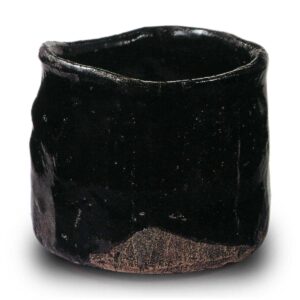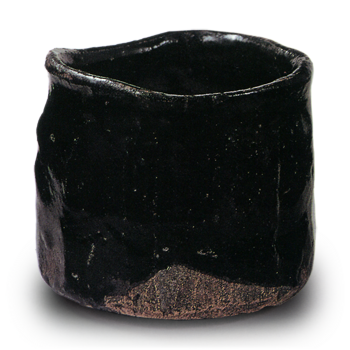
A type of Setoguro ware. It is a type of black iron-glazed ware, often used for tea bowls. They are called “Hikidashi Kuro” (black drawer) because they are placed close to the door of the kiln in advance and pulled out at the appropriate time. Its production began in the Azuchi-Momoyama period (1568-1600), and it is similar to Raku ware, but has its own unique flavor. According to “Wohari no Hana,” it is divided into the following three types
(1) Hard and dense in texture with thin walls, and generally made on the potter’s wheel. (2) The entire surface of the vessel (the geology is exposed on the exterior bottom) is covered with a deep glossy black glaze. (2) Vessels with a slightly softer texture and a slightly thinner body, glazed with a smooth black glaze over the entire surface (the texture is exposed on the exterior bottom) and decorated with a chrysanthemum, cherry blossom, or diamond-shaped motif in white. (3) This type of ware is similar to Shino ware, but the geology is softer and all of them were made with a finger-head, so many of them have a different shape called a kuboshiki or kutsugata. This vessel has a very elegant appearance, with a thick layer of pale black glaze applied to part or half of the body, and a grass pattern painted on it. The above (2) and (3) refer to black oribe.



